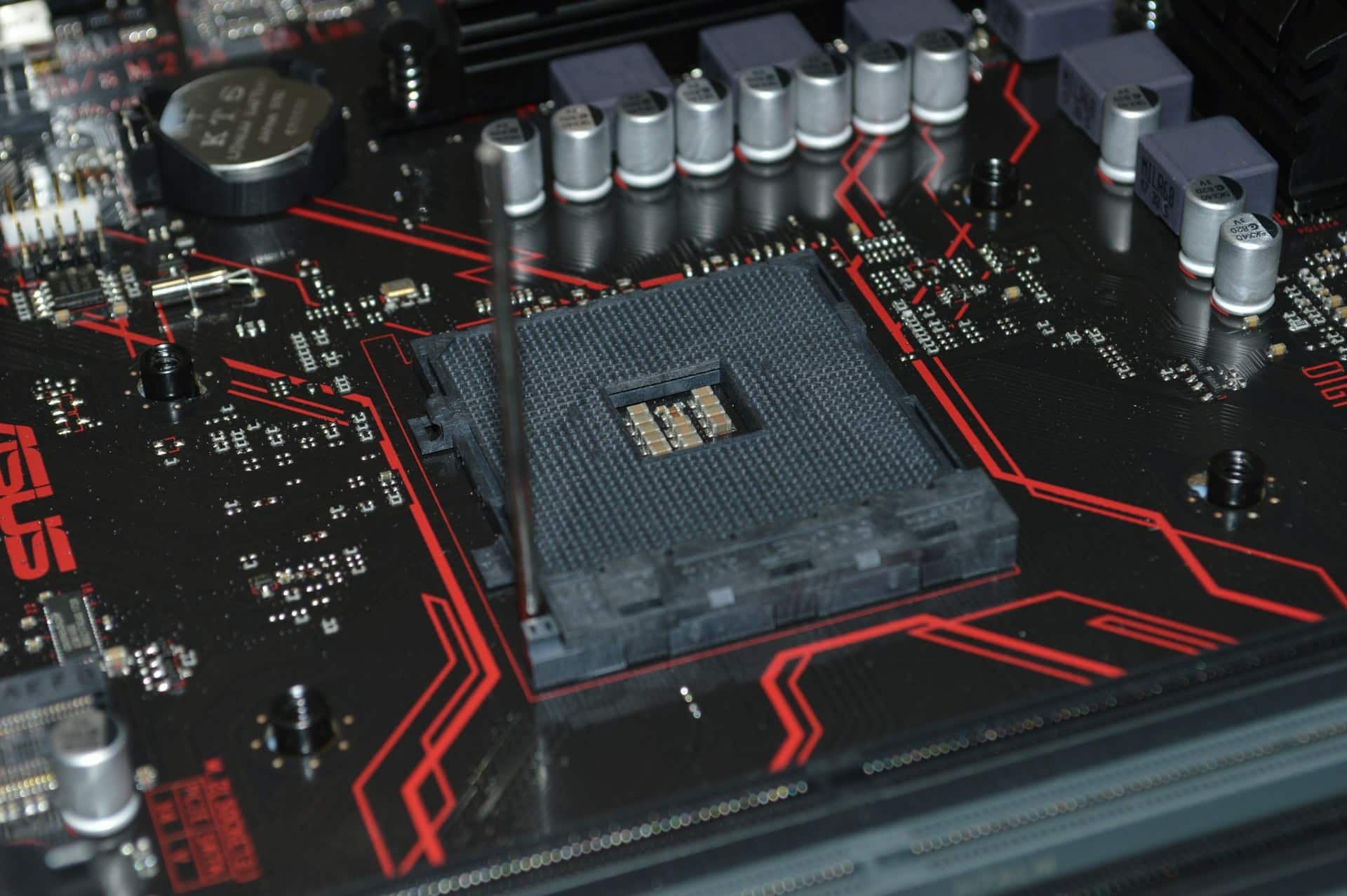How do you set up a high-performance gaming rig with an AMD Ryzen 9 5900X and an RTX 3080?

In today’s world of advanced gaming, having a high-performance rig is no longer a luxury but a necessity. For those of you looking to push the boundaries of your gaming experience, setting up a rig with an AMD Ryzen 9 5900X CPU and an NVIDIA GeForce RTX 3080 GPU is a perfect match for power and efficiency. Whether you're a seasoned gamer or a newcomer, this guide will walk you through every step to build an exceptional gaming desktop.
Choosing the Right Components
When setting up a high-performance gaming rig, selecting the right components is crucial. Your choices will impact your system's performance, stability, and future upgradeability.
Lire également : What are the best methods for achieving low-latency streaming with an Elgato 4K60 Pro on a custom-built PC?
The Heart of Your Rig: AMD Ryzen 9 5900X
At the core of your gaming setup is the AMD Ryzen 9 5900X. This processor boasts 12 cores and 24 threads with a base clock of 3.7 GHz, easily overclockable to higher speeds. The Ryzen series is known for its excellent balance between performance and energy efficiency, making it ideal for handling demanding games and multitasking.
The Ryzen 9 5900X is built on AMD's Zen 3 architecture, which offers significant improvements in performance per watt compared to its predecessors. This CPU excels in both single-threaded and multi-threaded tasks, ensuring smooth gameplay and quick load times.
A lire en complément : What are the detailed steps to configure a secure file-sharing setup using FreeNAS on a custom-built PC?
Graphics Powerhouse: NVIDIA GeForce RTX 3080
For the GPU, the NVIDIA GeForce RTX 3080 is a powerhouse that can handle the most graphically intense games. With 10GB of GDDR6X RAM, this card delivers incredible performance, capable of running games at 4K resolution with high frame rates. The RTX 3080 features real-time ray tracing, providing stunning visuals and immersive environments.
NVIDIA's Ampere architecture powers the RTX 3080, offering improved efficiency and performance over previous generations. With GPU boost clocks of up to 1.71 GHz, this card ensures that your games run smoothly, even at the highest settings.
Suitable Motherboard
A compatible motherboard is key for harnessing the full potential of your CPU and GPU. Look for a board with support for PCIe 4.0, multiple M.2 slots for NVMe storage, and ample connectivity options. X570 and B550 motherboards are popular choices, as they offer plenty of features and robust power delivery systems.
Memory: DDR4 RAM
For memory, 16GB to 32GB of DDR4 RAM with speeds of at least 3200 MHz is recommended. Faster RAM speeds can improve system responsiveness and game load times. Look for modules with low latency and, if you prefer, RGB lighting to match your rig’s aesthetic.
Storage Solutions
Fast storage is essential for quick game load times and overall system responsiveness. Consider a combination of an NVMe SSD for your operating system and frequently played games, along with a larger HDD for bulk storage. A 1TB NVMe SSD provides a good balance between speed and capacity.
Case and Cooling Solutions
A well-ventilated case is crucial for maintaining optimal temperatures. Look for a mid-tower or full-tower case with good airflow, multiple fan mounting options, and space for liquid cooling solutions if desired. Cases with RGB lighting and tempered glass panels not only enhance aesthetics but also provide a view of your internal components.
Power Supply (PSU)
An efficient and reliable power supply is necessary to ensure stable power delivery. A 750W to 850W PSU with an 80+ Gold rating is recommended for this setup. Ensure that the PSU has enough PCIe connectors for your GPU and sufficient wattage to handle future upgrades.
Building the Rig
Now that you have selected the components, it’s time to assemble your gaming rig. Follow these steps carefully to ensure a smooth build process.
Preparing the Case
Start by preparing your case. Remove any side panels and front panels to provide easy access to the interior. If your case comes with pre-installed fans, make sure they are properly positioned for optimal airflow.
Installing the Motherboard
Place the motherboard on a clean, static-free surface. Install the CPU by lifting the retention arm, aligning the notches, and gently placing the CPU into the socket. Once aligned, lower the retention arm to secure the CPU in place.
Next, install the RAM modules by aligning them with the slots and pressing down until the latches click into place. If your motherboard has an NVMe slot, install your NVMe SSD by sliding it at an angle and securing it with a screw.
Carefully place the motherboard into the case, aligning it with the standoffs. Secure it using the provided screws, ensuring it is firmly in place.
Installing the Graphics Card
Insert the NVIDIA GeForce RTX 3080 into the primary PCIe slot, usually the top one. Press down firmly until it clicks into place. Secure the GPU with screws to the back of the case. Connect the necessary PCIe power cables from your power supply to the GPU.
Power Supply and Cable Management
Install the power supply at the designated spot in the case, usually at the bottom or top. Secure it with screws and connect the necessary cables to the motherboard, GPU, and other components. Good cable management is essential for airflow and aesthetics. Use cable ties and routing holes to keep cables tidy and out of the way.
Storage Installation
Install the remaining storage drives. For 2.5-inch SSDs or 3.5-inch HDDs, use the provided brackets or slots. Connect the drives to the motherboard using SATA cables and power them using the cables from the PSU.
Cooling Solutions
Install your cooling solutions, whether air or liquid cooling. For air coolers, secure the heatsink and fan onto the CPU socket. For liquid cooling, mount the radiator and fans to the designated spots in the case and attach the liquid block to the CPU. Ensure all connections are secure and there are no leaks.
Installing the Operating System and Drivers
With the hardware assembled, it’s time to install the operating system and necessary drivers. This will ensure your gaming rig runs efficiently and can handle the latest games and applications.
Installing Windows
Create a bootable USB drive with Windows using the Media Creation Tool from Microsoft. Insert the USB drive into a port and power on your system. Enter the BIOS by pressing the designated key (usually DEL or F2) during startup. Set the USB drive as the primary boot device and save the changes.
Follow the on-screen instructions to install Windows. Choose your desired settings and partition the NVMe SSD for the OS installation. Once Windows is installed, proceed to install the necessary drivers.
Installing Drivers
Begin by installing the motherboard drivers. These can be downloaded from the manufacturer’s website. Install the chipset, audio, and LAN drivers first. Next, install the GPU drivers from NVIDIA’s website. Ensure you download the latest version for the best performance.
Updating Windows and BIOS
Run Windows Update to install the latest updates and security patches. Check the motherboard manufacturer’s website for any BIOS updates and follow their instructions to update the BIOS. This can improve system stability and performance.
Optimizing Performance
With your gaming rig up and running, there are several steps you can take to optimize performance and ensure a smooth gaming experience.
Overclocking
Overclocking your CPU and GPU can provide a performance boost. Use software like AMD Ryzen Master for the CPU and MSI Afterburner for the GPU. Increase the clock speeds gradually and monitor temperatures to ensure stability. Overclocking can lead to higher performance, but it also increases power consumption and heat output.
Monitoring Temperatures
Keep an eye on system temperatures using software like HWMonitor or Core Temp. High temperatures can lead to thermal throttling and reduced performance. Ensure your cooling solutions are adequate and that the case has good airflow.
Game Settings
Adjust in-game settings to match your hardware capabilities. While the RTX 3080 can handle high settings, turning off unnecessary features like motion blur can improve performance. Enable V-Sync or G-Sync to reduce screen tearing and enhance your gaming experience.
Regular Maintenance
Keep your gaming rig clean and dust-free. Dust can obstruct airflow and cause components to overheat. Use compressed air to clean the interior regularly. Update drivers and software to ensure optimal performance and security.
Setting up a high-performance gaming rig with an AMD Ryzen 9 5900X and an RTX 3080 is an excellent way to enhance your gaming experience. By carefully selecting the right components, assembling them correctly, and optimizing your system, you’ll be able to enjoy the latest games with unparalleled performance and stunning visuals.
For those of you passionate about gaming, this setup provides a perfect balance between power and efficiency. Whether you’re looking to play the latest AAA titles or engage in competitive esports, this build will meet and exceed your expectations. Embrace the power of AMD and NVIDIA and dive into the ultimate gaming experience.
Stay tuned for more guides and updates. Don’t forget to subscribe to our RSS feed to keep up with the latest trends and tips in the gaming world. If you encounter any inappropriate content, please report inappropriate content using the provided links.
Happy gaming!
